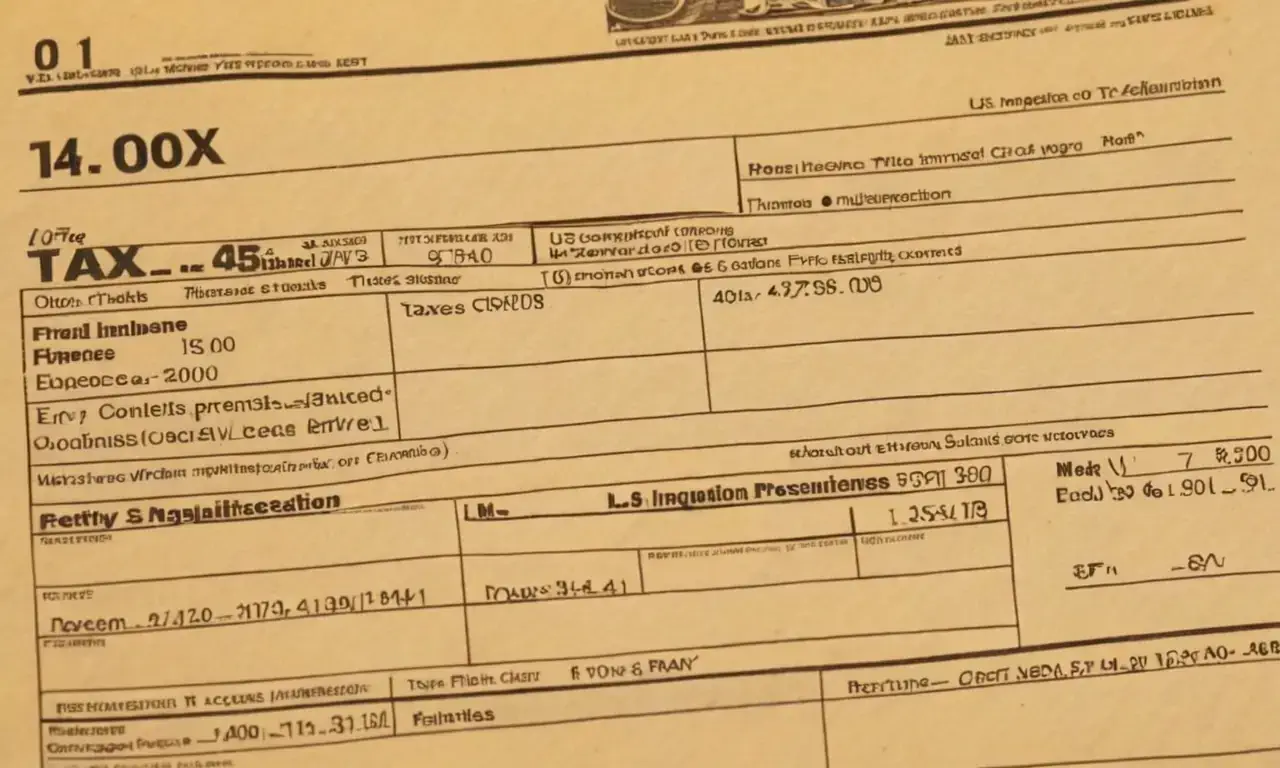
Foreign Tax Credit: Claiming Relief on U.S. Tax Liability

The foreign tax credit is a vital provision in the United States tax code that allows U.S. citizens who earn income from foreign sources to claim a dollar-for-dollar reduction in their U.S. tax liability for taxes paid to a foreign country. This mechanism provides relief to taxpayers who are subject to taxation in multiple jurisdictions, ensuring they do not pay duplicate taxes on the same income.
The concept of taxing individuals and businesses on worldwide income is complex and can lead to double taxation if not properly managed. The foreign tax credit aims to mitigate this issue by allowing taxpayers to claim a credit against their U.S. tax liability for taxes already paid abroad. This approach helps maintain fairness in the tax system, ensuring that U.S. citizens are not unfairly burdened with higher tax liabilities due to foreign income.
Eligibility Requirements
To qualify for the foreign tax credit, taxpayers must meet four key requirements. Firstly, they must have paid actual taxes to a foreign government. The payment of these taxes is crucial; merely owing taxes or having them imposed does not suffice. Secondly, the taxes must be imposed by a foreign government. This means that only taxes levied by a country's tax authority can be considered for the credit. Thirdly, the taxpayer must have earned income from sources outside the United States. Lastly, the taxpayer must file a U.S. tax return and report their worldwide income.
Meeting these requirements is essential to ensure eligibility for the foreign tax credit. Taxpayers who fail to meet any of these conditions may not be able to claim the credit, even if they have paid taxes abroad. It's also worth noting that the Internal Revenue Service (IRS) closely scrutinizes these claims, so taxpayers must maintain accurate records and documentation to support their eligibility.
Claiming the Credit
Claiming the foreign tax credit involves several steps. Taxpayers typically start by reporting their foreign income on Schedule 1 of Form 1040 or Form 1120 for corporations. They then complete Form 1116, which is specifically designed for calculating the foreign tax credit. This form requires taxpayers to list all taxes paid to a foreign government and calculate the total amount of taxes paid.
The next step involves determining the amount of U.S. tax liability that can be reduced by the foreign tax credit. Taxpayers must also consider any limitations on the credit, which are discussed in more detail later. Once these calculations are complete, taxpayers can claim the credit on their U.S. tax return. It's advisable for taxpayers to consult with a tax professional or accountant who is familiar with international taxation laws and regulations.
Calculating the Credit
Calculating the foreign tax credit involves several steps that require careful attention to detail. Taxpayers must first determine the total amount of foreign taxes paid, which includes all taxes levied by foreign governments on their income. This can include corporate taxes, personal income taxes, or other types of taxes.
Next, taxpayers need to calculate their U.S. tax liability for the same year. They then compare this liability with the foreign taxes paid and determine how much credit they are eligible for. The IRS provides a formula for calculating the credit, which involves multiplying the foreign taxes paid by the ratio of U.S. tax liability to total income from both U.S. and foreign sources.
Taxpayers must also consider any limitations on the credit, such as the overall limitation rule or the separate limitation rules that apply to certain types of income. These rules can significantly impact the amount of credit a taxpayer is eligible for, so it's crucial to understand them before proceeding with the calculation.
Limits on the Credit

There are several limits on the foreign tax credit that taxpayers must be aware of. The first limit is the overall limitation rule, which states that the foreign tax credit cannot exceed the U.S. tax liability for the year. This means that even if a taxpayer has paid significant taxes abroad, they can only claim a credit up to the amount of their U.S. tax liability.
Another limitation applies when taxpayers have income from certain sources, such as dividends or interest. In these cases, the foreign tax credit is limited to 50% of the foreign taxes paid on those specific types of income. This means that even if a taxpayer has paid more than 50% in foreign taxes, they can only claim half of that amount as a credit.
Understanding these limitations is crucial for taxpayers who are claiming the foreign tax credit. Failing to consider them could result in an incorrect calculation and potential penalties from the IRS.
Other Tax Benefits
While the foreign tax credit provides significant relief to U.S. citizens with foreign income, there may be other tax benefits available that can complement this credit. For example, taxpayers may also be eligible for exclusions or deductions on their foreign income. However, it's worth noting that these benefits cannot be claimed in conjunction with the foreign tax credit.
Taxpayers should carefully review their individual circumstances and consult with a tax professional to determine which benefits they are eligible for. This will help ensure that they maximize their tax savings while also complying with all applicable laws and regulations.
Joint Returns
The foreign tax credit can be claimed on joint returns, just like any other tax benefit. When filing jointly, taxpayers must report their worldwide income together and claim the foreign tax credit based on their combined U.S. tax liability. This means that both spouses are responsible for ensuring they meet all eligibility requirements and comply with the rules governing the credit.
However, it's essential to note that joint filers may face additional complexities when claiming the foreign tax credit. For instance, if one spouse has a significant amount of foreign income but no U.S. tax liability, the other spouse cannot claim the credit on their behalf. This highlights the importance of accurate record-keeping and communication between spouses.
Form 116
Form 116 is specifically designed for calculating the foreign tax credit. It requires taxpayers to list all taxes paid to a foreign government and calculate the total amount of taxes paid. Taxpayers must also provide detailed information about their foreign income, including the source of the income and the type of taxes levied.
Completing Form 116 accurately is crucial for claiming the foreign tax credit correctly. Taxpayers should ensure they have all necessary documentation and records before filing this form to avoid any errors or delays in processing their claim.
Foreign Income Sources
Understanding where foreign income comes from is essential when claiming the foreign tax credit. This can include income earned through employment, investments, or business activities abroad. Taxpayers must accurately report all foreign income on their U.S. tax return and provide supporting documentation to justify their claims.
The IRS scrutinizes foreign income sources closely, so taxpayers should maintain detailed records of their foreign earnings and taxes paid. This includes keeping receipts for taxes paid, as well as any other relevant documents that may be requested by the IRS during an audit.
U.S. Tax Liability
To claim the foreign tax credit, taxpayers must have a positive U.S. tax liability. If a taxpayer has no U.S. tax liability or if their foreign income is fully exempt from U.S. taxation, they cannot claim the credit. This means that even if a taxpayer pays significant taxes abroad, they may not be eligible for the foreign tax credit if they have no corresponding U.S. tax liability.
Taxpayers should carefully review their individual circumstances and consult with a tax professional to determine whether they meet this requirement. Understanding the interplay between foreign income and U.S. tax liability is crucial in navigating the complexities of international taxation.
Exclusions vs. Credits
While both exclusions and credits can provide relief on foreign income, there are key differences between them. Exclusions allow taxpayers to exclude certain types of foreign income from their U.S. taxable income, whereas credits directly reduce a taxpayer's U.S. tax liability by the amount of foreign taxes paid.
Taxpayers should carefully consider which option is more beneficial for their specific situation. For instance, if a taxpayer has significant foreign income but no corresponding U.S. tax liability, an exclusion might be more advantageous than claiming the foreign tax credit.
Conclusion
Claiming the foreign tax credit requires careful consideration of various rules and limitations. Taxpayers must ensure they meet all eligibility requirements, accurately calculate their foreign taxes paid, and comply with the overall limitation rule or separate limitation rules that apply to certain types of income. By understanding these complexities and consulting with a tax professional when necessary, U.S. citizens can maximize their tax savings while navigating the intricacies of international taxation.
Leave a Reply





Related Links